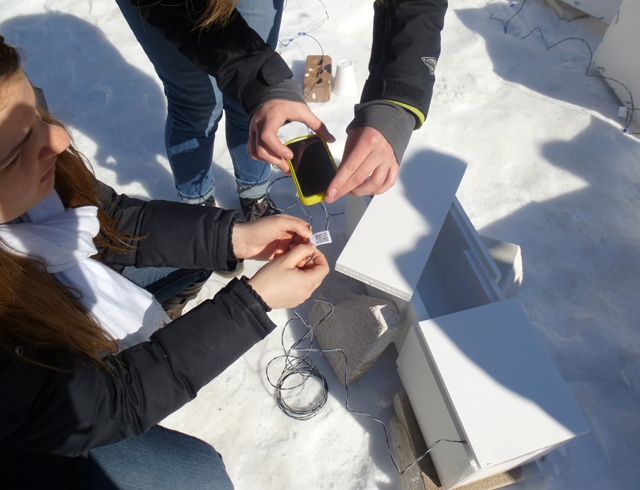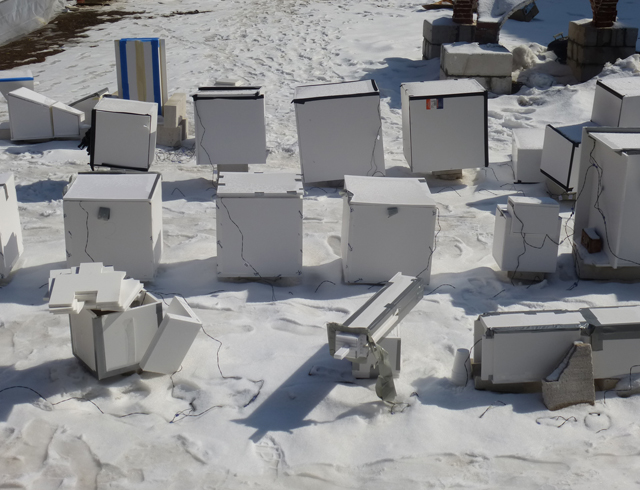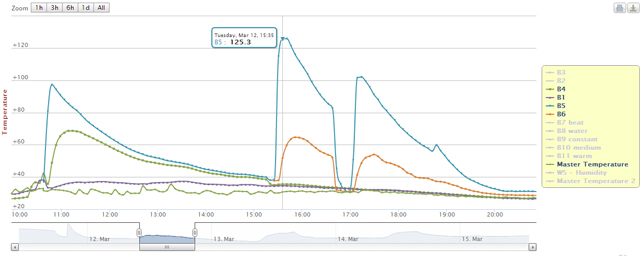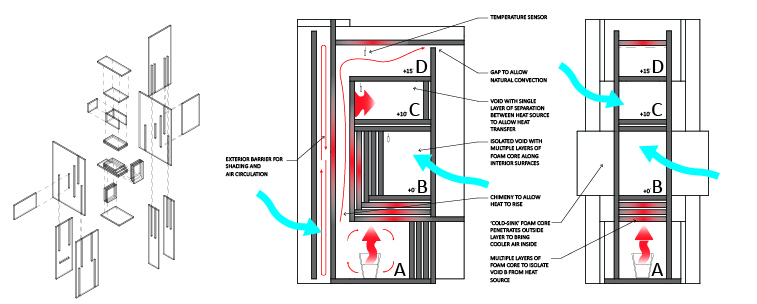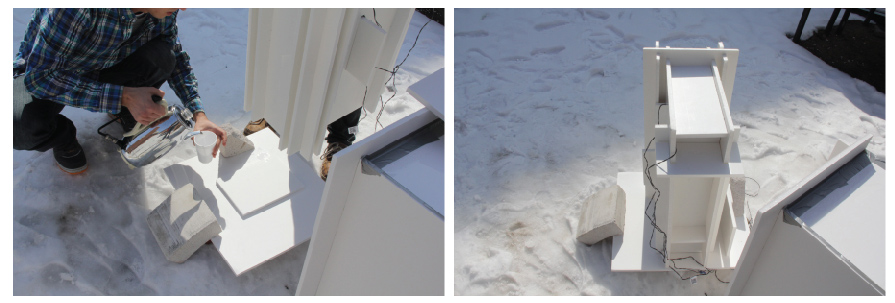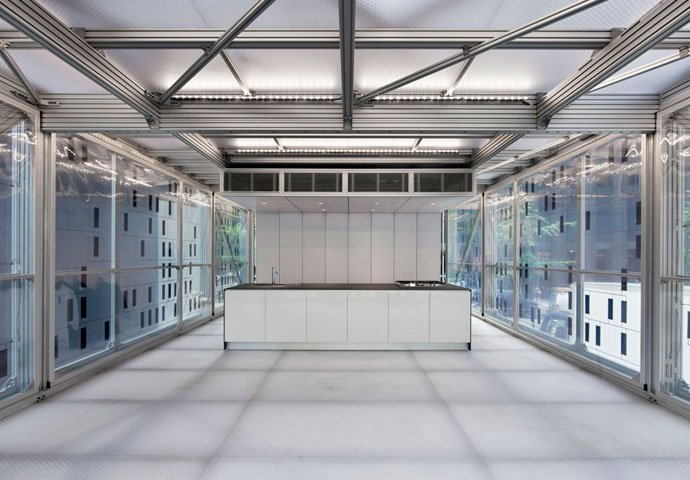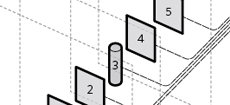Materials as Probes Workshop at University of Minnesota
Students name sensors with QR codes in a workshop exploring how real-time environmental feedback influences design.
Through a week-long "Architecture as Catalyst" workshop at the University of Minnesota, KieranTimberlake researchers Billie Faircloth and Ryan Welch challenged architecture students to recast whole material assemblies as "fast" weather probes. Using low-cost wireless sensor technology developed by our research group, students were able to align their materials and construction know-how with real-time studies of the environment and open a discourse on how real-time environmental feedback can influence design practice.
EXPERIMENTATION
Over the course of the week, each of the four student teams was assigned a construction logic and challenged to build a series of forms out of simple materials whose interiors would achieve particular thermal performance goals. In the first experiment, students explored variations on a theme by selectively changing the number of insulating layers, the space between layers, or the connections between layers. After equipping each of these test volumes with sensors and exposing them to the late-winter Minneapolis climate, students were able to track the interior and exterior temperatures over time and develop hypotheses about how further variations would affect thermal behavior.
Materials assemblies on site at the University of Minnesota
Subsequent experiments introduced an internal heat source in the form of a cup of boiling water, requiring the students to manage the competing forces of internal gains and external losses to the environment. Rather than assuming a single, “optimal” thermal condition, students were instead challenged to use their acquired knowledge to create differentiated thermal zones within the same volume. In Experiment 2, two zones would need to exceed outdoor temperature by 5°F and 15°F, respectively, two hours after the introduction of the water. In Experiment 3, students would aim to delay the onset of a peak temperature in a zone of their choice for as long as possible following the introduction of the heat source. While designing these next experiments, students took the initiative to conduct further studies on their existing assemblies to understand the relative rates of heat transfer. Based on their observations of exponential temperature decay, one group of students was even able to predict that they would overshoot their mark following their initial launch of Experiment 2, leading them to make minor last-minute modifications that brought them much closer to achieving their objectives.
Web interface for viewing sensor data, showing preliminary testing, initial launch, and subsequent re-launch of Experiment 2.
In the final experiment, each team of students developed its own set of competing thermal performance objectives for a single form. Because of the difficulty of achieving multiple goals simultaneously, teams found ways in which each thermal zone could be tuned by adjusting aperture sizes, convective pathways, and layering. Thus the final forms express not only an intentionality in curating transient thermal behavior, but a capacity to adjust that behavior by means of simple and reversible adjustments to the underlying construction logic.
Construction logic and interpretive thermal diagram of final experiment (Image Credit: Brice Aarrestad, Jordan Barlow, Michael Healy)
Fabrication and installation of final experiment (Image Credit: Brice Aarrestad, Jordan Barlow, Michael Healy)
Iterative trials and analysis of final experiment (Image Credit: Brice Aarrestad, Jordan Barlow, Michael Healy)
In their final presentation, several students observed that the need to introduce iterative adjustability had a significant impact on the way they approached form-making in the final experiment. While their initial studies relied on tape and adhesives to form material connections, those assemblies proved less flexible than subsequent assemblies that relied solely on interlocking joints that could be manipulated on site. In designing around such flexibility, students' fabrication work evolved to be in much closer tandem with their analyses and in many ways blurred the distinction between architect and adjuster.
Students expressed a desire for further investigations to fold in other indicators of environmental quality, including light, sound, humidity, and atmospheric content. Indeed, KieranTimberlake's wireless sensor technology has already begun to address several of these features, and we look forward to broadening the scope of this inquiry in further academic courses.
TECHNOLOGY
The Materials as Probes experiment was made possible through KieranTimberlake's Wireless Sensor Network. This technology allows anyone with a smart phone to deploy low-cost sensors in the field, collect data wirelessly, and view results through a simple web interface. Each team received a kit containing one wireless node and 12 temperature sensors that they deployed and named themselves using the provided connectors and QR-codes.
Sensor installation
Contents of the wireless sensor devices provided to each team of students
KieranTimberlake's web interface allowed each team of students to compare its own sensor readings to a weather station standard that was also deployed on site. In addition to providing the data behind the analyses, the web interface also offers a snapshot of the students' activity over the course of the week and their engagement with the very essence of iterative experimentation.



